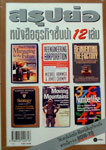
สรุปย่อหนังสือธุรกิจชั้นนำ 12 เล่ม
by กองบรรณาธิการนิตยสาร How-to in Business.
Publisher: กรุงเทพฯ : ซีเอ็ดยูเคชั่น, 2537.
Description: 200 หน้า : ภาพประกอบ ; 24 ซม.
ISBN: 9745120715
ISSN: 9745120715
Subject: การจัดการ -- สาระสังเขป
การพัฒนาองค์การ -- สาระสังเขป
ธุรกิจ -- สาระสังเขป
วันนี้ได้หยิบหนังสือ สรุปย่อหนังสือธุรกิจชั้นนำ 12 เล่ม หนังสือเล่มนี้ได้เคยอ่านมาแล้ว แต่มีคนบอกว่าควรจะอ่านหลายๆครั้งและบ่อยๆ เหมือนกับการลับใบเลื่อยและใบมีดควรที่จะลับบ่อยๆเพื่อให้คงความคมอยู่เสมอ เช่นเดียวกับ การอ่านหนังสือบ่อยๆเป็นการลับความคิดเพื่อให้ทั้งแหลมและคมอยู่เสมอ
เรื่องแรกคือ Strategy
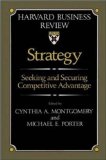
Strategy: Seeking And Securing Competitive Advantage (Hardcover)
by Cynthia A. Montgomery Ed.
Book Summary of Strategy: Seeking And Securing Competitive Advantage
What makes up an effective strategy? This collection of Harvard Business Review articles offers insight and practical advice from the leaders in the field: Michael Porter, Kenichi Ohmae, Steven Wheelwright, Gary Hamel, and C.K. Prahalad, among others. They show how advantage can and should be extracted from many sources, from marketing and joint ventures to financial analysis. Strategy provides managers with the best thinking available on how to make the critical decisions that determine business success. A Harvard Business Review Book.

บรรณาธิการ Cynthia A. Montgomery & Michael E. Porter
ผู้เรียบเรียง บุญชัย ปัญจรัตนากร
เนื้อหา การบริหารจัดการ
สำนักพิมพ์ Harvard Business School Press, Boston
จำนวน 475 หน้า
ราคา $ 29.95

ภาพ Corporate Strategy
จาก http://www.somethingcreativeinc.com/images/corporate_strategy.jpg
ในโลกธุรกิจปัจจุบันการมีกลยุทธ์ที่ดีๆเอาไว้มิใช่สิ่งโก้เก๋อะไรอีกต่อไป ทว่ามันกลายเป็นสิ่งที่ขาดไม่ได้ไปเสียแล้ว ไม่ว่าบริษัทของคุณจะมีขนาดใหญ่หรือเล็ก คุณย่อมต้องเผชิญกับการแข่งขันอย่างรุนแรงจากบริษัทคู่แข่งทั้งหลายอย่างไม่มีข้อยกเว้น โดยที่ยังไม่ต้องพูดถึงบรรดาเทคโนโลยีทั้งหลายที่ส่งผลต่อการเปลี่ยนแปลงโฉมหน้าของอุตสาหกรรม หรือพูดถึงวิธีการดำเนินธุรกิจที่พ้นสมัยอย่างที่คุณใช้กันอยู่ เพ่อให้คุณสามารถรับมือการแข่งขันดังกล่าวได้อย่างเหมาะสม จึงจำเป็นต้องมีการกำหนดเป้าหมายที่ชัดเจนและต้องรู้วิธีการที่จะก้าวไปให้ถึงเป้าหมายที่ตั้งไว้ ตรงนี้เองที่เรียกว่า "กลยุทธ์"

นับเป็นโชคดีที่กิจกรรมซึ่งคนส่วนน้อยเคยถือปฏิบัติโดยสัญชาติญาณ ได้กลายมาเป็นแบบแผนการปฏิบัติ ซึ่งได้รับการพัฒนาขึ้นเป็นอย่างมากในปัจจุบัน นักคิดชั้นเยี่ยมหลายต่อหลายคนได้เพียรพยายามคิดค้นอย่างหนัก ถึงการที่กลยุทธ์จะเข้ามามีบทบาทในการช่วยคุณให้ประสบความสำเร็จได้อย่างไร
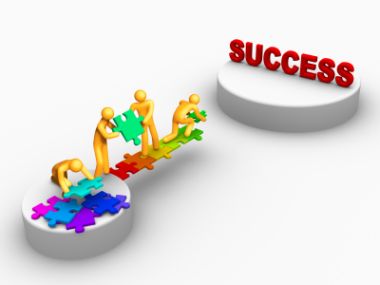
Team Work.
ภาพประกอบไม่เกี่ยวกับเนื้อเรื่อง จาก
ทว่าการใช้ความคิดนั้นเป็นเพียงส่วนหนึ่งของ"สมการ" กลยุทธ์จะมีความหมายอย่างแท้จริงก็ต่อเมื่อใช้ในบริบทของ"การตลาด"เท่านั้น เนื้อหาของเรื่องราวระดับคลาสสิค ซึ่งคัดเลือกจากวารสาร Harvard Business Review ที่ชุดนุกกันอยู่ในหนังสือเล่มนี้ จะประกอบไปด้วย แนวคิดทฤษฏี (แต่เพียงเล็กน้อย) และ "พิมพ์เขียว" สำหรับการปฏิบัติงานของคุณในแวดวงธุรกิจที่คุณเกี่ยวข้องด้วย
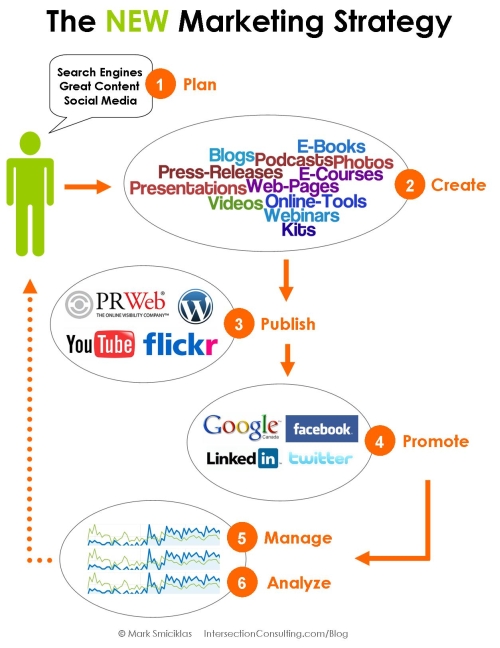
The New Marketing Strategy
ภาพประกอบไม่เกี่ยวกับเนื้อเรื่อง จาก http://www.
ในเล่มจะประกอบด้วยเนื้อหาที่เลือกสรรแล้ว แบ่งเป็น 4 ภาคด้วยกัน
ภาคหนึ่ง: Get Back to Strategy (กลับไปสู่การวางแผนกลยุทธ์)
นักวางกลยุทธ์เลือดบูชิโด เคนอิชิ โอมาเอะ เจ้าของงานเขียน The Mind of The Strategy อันโด่งดังข้ามน้ำข้ามทะเลไปถึงซีกโลกตะวันตก ได้เตือนสติบรรดานักวางแผนกลยุทธ์ทั้งหลาย ให้หันมาทำความเข้าใจถึงเป้าหมายที่แท้จริงของการวางแผนกลยุทธ์
ในทรรศนะของโอมาเอะ การแต่จะเป็นผู้ชนะในการแข่งขันด้านต่างๆ เช่น การแข่งขันกันพัฒนาคุณภาพของผลิตภัณฑ์ การแข่งขันกันลดต้นทุนการผลิต การแข่งขันกันโฆษณาอย่างไม่ลืมหูลืมตานั้น ยังไม่ใช่เป้าหมายที่แท้จริงของการแข่งขัน
การวางกลยุทธ์โดยยยึดเอาการแข่งขันเป็นเรื่องหลัก ย่อมจะทำให้ธุรกิจของคุณตกเป็นฝ่ายตั้งรับมากกว่าเป็นฝ่ายรุก หมายถึงต้องเฝ้าจับตามองคู่แข่งตลอดเวลาว่าเขาจะทำอะไรออกมา แล้วคุณจึงเป็นฝ่ายทำตาม แต่พยายามทำให้ดีกว่าคู่แข่ง ถ้าทำเช่นนี้ ก็ยากที่คุณจะเอาชนะคู่แข่งได้ แต่การใช้กลยุทธ์ที่ดีนั้นจะมีทางออกให้แก่คุณ

ในการวางกลยุทธ์ สิ่งสำคัญประการแรกที่คุณควรให้ความสนใจเป็นอันดับพิเศษก็คือ "ความต้องการของลูกค้า"
คำถามที่คุณควรถามตัวเอง คือ ผลิตภัณฑ์ของคุณคืออะไร มีประโยชน์ใช้สอยอย่างไร คุณมีวิธีการอย่างไรที่จะจัดระบบธุรกิจของคุณให้สามารถออกแบบผลิต และ วางตลาดผลิตภัณฑ์ดังกล่าว
หลังจากคุณตอบคำถามพื้นฐานเหล่านี้ได้อย่างน่าพอใจแล้วนั่นแหละ คุณถึงจะเริ่มลงมือทดสอบกลยุทธ์ต่างๆของคุณด้วยการแข่งขันกับผลิตภัณฑ์หรือบริษัทอื่นๆได้
มีข้อสังเกตประการหนึ่งที่ "ซุนจื้อ" เจ้าของตำรับตำราพิชัยยุทธ์ได้กล่าวไว้เมื่อหลายศตวรรษล่วงมาแล้วว่า "จงหลีกเลี่ยงการเผชิญหน้าให้มากที่สุดเท่าที่จะทำได้" ในกรณีที่คู่แข่งของคุณนั้นสามารถผลิตสินค้าหรือบริการที่มีคุณภาพและครองตลาดส่วนใหญ่อยู่แล้ว ก็ย่อมไม่คุ้มที่คุณจะหาญเข้าไปต่อกรด้วย

customer segmentation strategy
ภาพประกอบไม่เกี่ยวกับเนื้อเรื่อง จาก
ถ้าคุณเองก็มีพฤติกรรมเหมือนผู้จัดการทั้งหลายที่สาละวนอยู่กับการแข่งขันในตลาด คุณอาจเป็นอีกผู้หนึ่งที่มองข้ามความจริงข้อนี้ไป นั่นคือ
"การเป็นเจ้าของช่องว่างในตลาดนั้น เป็นกลยุทธ์ที่ล้ำเลิศกว่ากลยุทธ์ทั้งปวง"
โดย โอมาเอะ ได้ยกตัวอย่างเพื่อสนับสนุนคำกล่าวนี้ ได้แก่กรณีบริษัทยามาฮ่าแห่งญี่ปุ่น ประสบความสำเร็จในการหยุดยั้งยอดขายที่ตกต่ำลงของเปียโนในอัตรา 10 % ทุกๆปี ด้วยการคิดค้น "เปียโนพันธุ์ใหม่" ชื่อ Klavinova ซึ่งมีความสามารถเหนือกว่าเปียงโนทั่วๆไปและสามารถตอบสนองความต้องการของผู้ที่รักดนตรีได้มากกว่าเปียโนแบบเดิมๆ และสามารถตอบสนองความต้องการขอฝผู้ที่รักดนตรีได้มากกว่าเปียโนแบบเดิมๆ เพราะมันเป็นเปียโนอิเล็คทรอนิคส์ระบบดิจิตัลที่สามารถเล่นดนตรีได้ด้วยตัวมันเอง และ สามารถช่วยเล่นเครื่องดนตรีชิ้นหนึ่งให้ ในขณะที่ผู้เล่นดนตรีอีกชิ้นหนึ่งในบทเพลงเดียวกัน
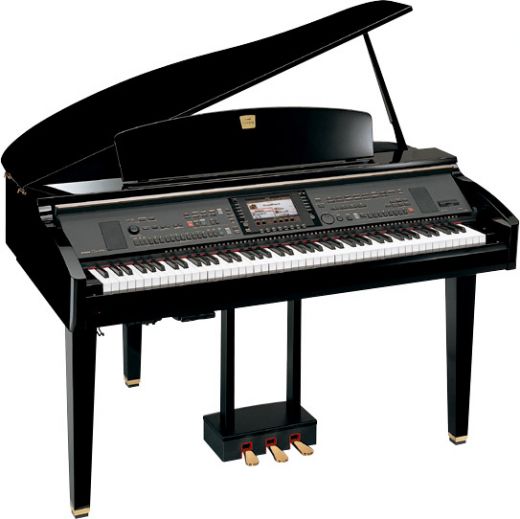
YAMAHA Digital Piano
ภาพประกอบไม่เกี่ยวกับเนื้อเรื่องจาก synthtopia.com
การเรียนรู้วิธีเล่นก็นับว่าไม่ยาก เพราะทางยามาฮ่าได้จัดทำเทปคาสเส็ตต์เพื่อให้คำแนะนำในเรื่องนี้เอาไว้ ด้วยความสามารถพิเศษเช่นนี้ทำให้ผู้บริโภคทั้งหลายต่างยกนิ้วให้กับเครื่องดนตรีพันธุ์ใหม่นี้กันทั่วหน้า
นี่เป็นกรณีตัวอย่างกรณีหนึ่งที่แสดงให้เห็นว่า การถามคำถามเพื่อค้นหาความต้องการที่แท้จริงของลูกค้าต่อผลิตภัณฑ์นั้นส่งผลดีต่อการพัฒนากลยุทธ์อย่างไร

Global Team
ภาพประกอบไม่เกี่ยวกับเนื้อเรื่องจาก http://www.daibochiplastic.com
ภาคสอง : Corporate Strategy (กลยุทธ์ระดับบริษัท)
Michael E. Porter เจ้าของฉายา "Harvard guru" ซึ่งเป็นบรรณาธิการร่วมของหนังสือเล่มนี้ ได้อรรถาธิบายไว้ในงานเขียนของเขาในสมัยนี้ว่า
บริษัทที่มีธุรกิจมากกว่าหนึ่งอย่างนั้นจะต้องคำนึงถึงกลยุทธ์ถึง 2 ระดับ
ระดับหนึ่งคือ Compettitive Strategy ซึ่งว่าด้วยการสร้างความได้เปรียบอย่างต่อเนื่องให้กับธุรกิจแต่ละอย่างที่บริษัทดำเนินอยู่
อีกระดับหนึ่งคือ Corporate Strategy ซึ่งแตกต่างจากกลยุทธ์แบบแรก โดยกลยุทธ์ระดับนี้จะมาเป็นตัวกำหนดว่าบริษัทควรจะเข้าร่วมในธุรกิจประเภทใดบ้าง และ วิธีการที่สำนักงานใหญ่ของบริษัทควรใช้จัดการกับธุรกิจประเภทนั้นๆควรจะเป็นอย่างไร
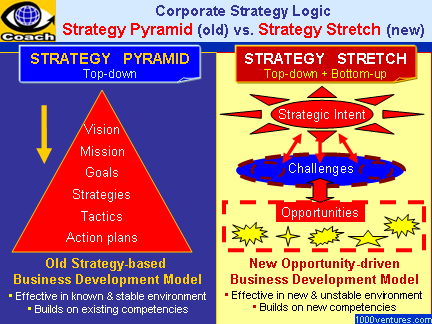
Corporate Strategy: 2 Logics
ภาพประกอบไม่เกี่ยวกับเนื้อเรื่อง จาก 1000ventures.com
จากผลการศึกษาพบว่า ความพยายามที่บริษัทระดับBig จะผนวกกิจการของบริษัทอื่นๆเข้ามาเพื่อให้บริษัทเติมโตขึ้น หรือ เพื่อเป็นการเพิ่มมูลค่าของกิจการให้กับผู้เป็นเจ้าของกิจการนั้นส่วนใหญ่มักประสบความล้มเหลว ไม่ว่ากิจการที่ถูกผนวกเข้ามานั้นจะมีความเกี่ยวข้องหรือไม่มีความเกี่ยวข้องกับธุรกิจเดิมที่บริษัททำอยู่ก็ตาม ข้อเท็จจริงดังกล่าว ย่อมส่อแสดงว่า กลยุทธ์ที่บรรดาบริษัทเหล่านี้นำมาใช้ยังขาดความเหมาะสมและไม่มีประสิทธิผลเพียงพอ ความล้มเหลวของความพยายามข้างต้นน่าจะสืบเนื่องมาจากเหตุผล 2 ประการ คือ
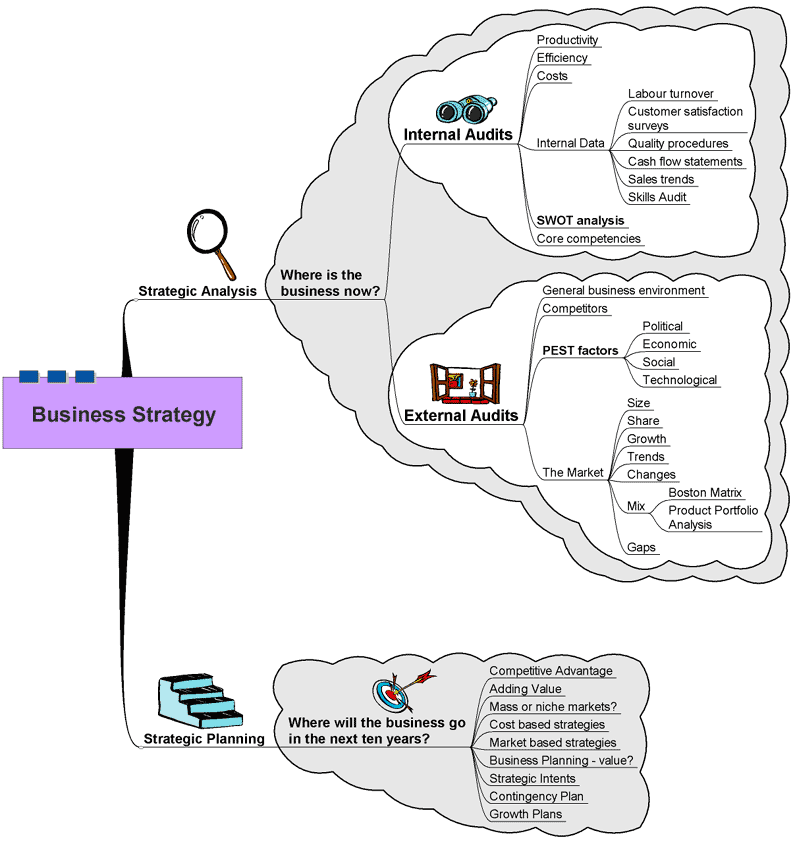
Business Strategy
ภาพประกอบไม่เกี่ยวกับเนื้อเรื่องจาก bloggang.com
ประการแรก การแข่งขันนั้นเกิดขึ้นใระดับหน่วยธุรกิจ
ตัวบริษัทไม่ได้ลงไปแข่งขันเอง แต่ธุรกิจของบริษัทต่างหากที่เป็นตัวแข่งขัน หากกลยุทธ์ระดับ corporate strategy ของบริษัทมิได้ให้ความสนใจต่อการถนอมรักษาความสำเร็จของแต่ละหน่วยธุรกิจเอาไว้ บริษัทนั้นก็จะประสบความล้มเหลว
ประการที่สอง การกระจายการลงทุนในกิจการอื่นๆ เพื่อลดความเสี่ยงของธุรกิจ หรือ ที่เรียกว่า diversification นั้นเป็นการเพิ่มภาระค่าใช้จ่ายและข้อจำกัดในการตัดสินใจให้กับหน่วยธุรกิจ
ทำให้หน่วยธุรกิจดังกล่าวต้องสูญเสียเวลาไปกับการอธิบายเหตุผลของการตัดสินใจต่างๆต่อสำนักงานใหญ่ ต้องเสียเวลาทำงานเอกสาร รวมทั้งต้องยอมทำตามคำขอร้องจากเบื้องบน
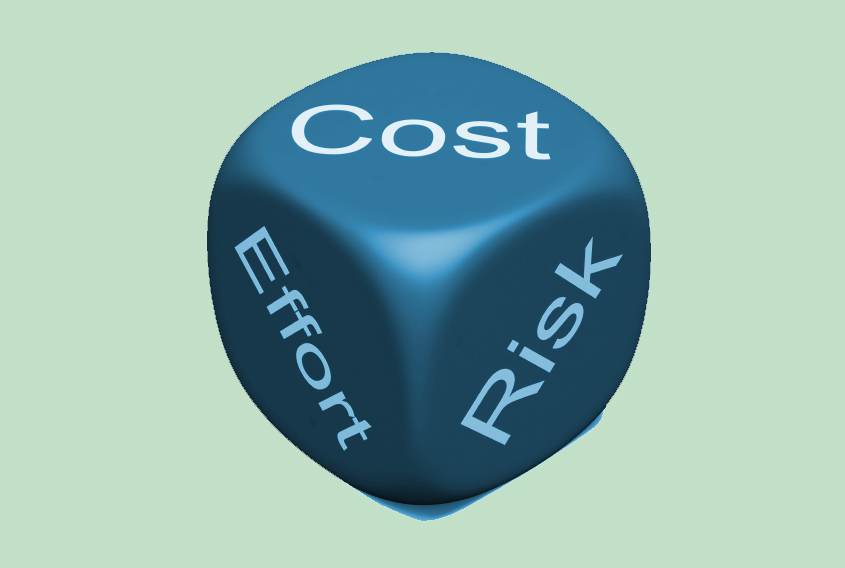
Business Strategy
ภาพประกอบไม่เกี่ยวกับเนื้อเรื่องจาก am-analysis.com
Porter ได้เสนอให้ผู้อ่านตั้งคำถามสำคัญ 3 ข้อ ก่อนที่จะทำการ diversify (กระจายการลงทุน) กิจการไม่ว่าจะขนาดใหญ่หรือเล็กก็ตาม
กล่าวคือ
หนึ่ง อุตสาหกรรม หรือ ธุรกิจที่คุณจะกระโจนเข้าไปนั้นมันน่าสนใจจริงๆหรือ
สอง มันจะให้ผลคุ้มค่ากับเงินลงทุนหรือไม่
สาม มันจะช่วยให้ธุรกิจคุณไปได้สวยกว่าเดิมหรือไม่
คำถาม 3 ข้อนี้นับเป็นข้อสอบที่ยากเย็นเสียจนการทำ diversification ส่วนใหญ่สอบไม่ผ่าน อย่างไรก็ตาม Porter ได้เสนอกลยุทธ์ไว้ 2 แนวทางที่จะช่วยให้คุณสามารถนำสัมพันธภาพระหว่างหน่วยธุรกิจมาทำให้เกิดประโยชน์และช่วยให้คุณประสบผลสำเร็จหรือสอบผ่านข้อสอบทั้งสามข้อนั้นได้
กลยุทธ์อย่างแรก คือ ต้องพิจารณาว่า คุณจะสามารถถ่ายทอดทักษะที่เป็นเลิศอยู่แล้วของหน่วยธุรกิจในบริษัทของคุณไปยังหน่วยธุรกิจใหม่ที่คุณเพิ่งจะผนวกเข้ามาในบริษัทได้หรือไม่ หรือ อาจจะเป็นในทางกลับกันก็ได้
เช่น สมมุติว่าบริษัทของคุณเป็นบริษัทผู้ผลิตสินค้าอุปโภคบริโภคมีความชำนาญในการวางตำแหน่งและส่งเสริมการขายสินค้าเหล่านั้นอยู่แล้ว ต่อมาคุณเกิดตัดสินใจซื้อบริษัทผู้ผลิตและจำหน่ายยาแก้ไอชนิดน้ำเชื่อม เพื่อผนวกเข้ามาในบริษัท คุณจะสามารถถ่ายทอดทักษะทางการตลาดที่เป็นเลิศของคุณไปสู่บริษัทที่ถูกผนวกเข้ามาได้หรือไม่
กลยุทธ์อย่างที่สอง คือ ต้องพิจารณาว่า คุณจะสามารถใช้กิจกรรมร่วมกันได้หรือไม่
ยกตัวอย่างเช่น บริษัท Procters & Gamble ใช้ทั้งระบบการจัดจำหน่ายและทีมงานขายชุดเดียวกันสำหรับผลิตภัณฑ์ผ้าอ้อมสำเร็จรูป กลยุทธ์ข้อนี้นับว่าได้ผลชะงัดเพราะมันจะช่วยคุณลดค่าใช้จ่ายหรือไม่ก็ช่วยเพิ่มความได้เปรียบในเชิงการแข่งขันของคุณ
บริษัท General Electric สามารถลดต้นทุนการผลิตโดยการกระจายกิจกรรมเกี่ยววกับการโฆษณาการขายและการบริการให้แก่ผลิตภัณฑ์อุปกรณ์ไฟฟ้าต่างๆ ที่มีอยู่มากมายได้ใช้ร่วมกัน
ตรงจุดนี้เองที่บริษัทซึ่งเพิ่งจะถูกผนวกเข้ามามีโอกาสที่จะ "แจ้งเกิด" ในวงการได้ไม่ยากนัก ถ้าบริษัทดังกล่าวสามารถใช้กิจกรรมที่มีประสิทธิภาพอยู่แล้ว ซึ่งอาจเป็นระบบเครือข่ายการให้บริการร่วมกับผลิตภัณฑ์หลักตัวอื่นๆ
ท้ายที่สุด Porter ย้ำว่า บริษัทต้องส่งเสริมความร่วมมือกันในหมู่หน่วยธุรกิจของบริษัท ฝ่ายบริหารอาจจะลองปลูกฝังจิตสำนึกในความเป็นหนึ่งเดียวกันของบริษัท โดยใช้วิธีจัดทำคำประกาศ ว่าด้วยภาระหน้าที่ของหน่วยธุรกิจโดยเน้นการผนึกกลยุทธ์ของหน่วยงานต่างๆเข้าหากัน มากกว่าที่จะตอบแทนหน่วยธุรกิจใดหนวยธุรกิจหนึ่งโดยเฉพาะและโดยการจัดตั้งคณะประสานงานระหว่างหน่วยธุรกิจขึ้นมา
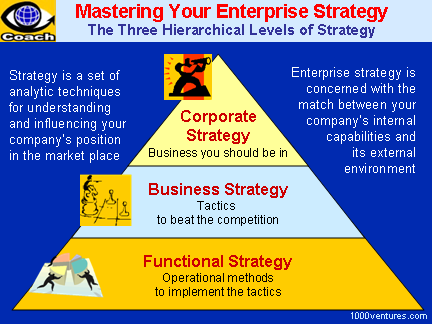
Business Strategy
ภาพประกอบไม่เกี่ยวกับเนื้อเรื่องจาก http://www.
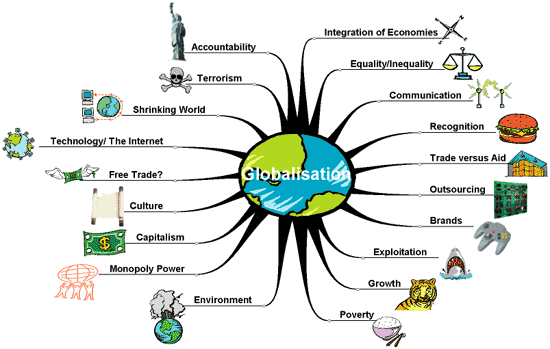
GLOBALISATION, EXPLOITATION
ภาพประกอบไม่เกี่ยวกับเนื้อเรื่องจาก dlibrary.acu.edu.au
ภาคสาม: Globalization of Markets (การทำตลาดให้เป็นสากล)
Theodore Levin นักวางกลยุทธ์ชั้นนำของโลกอีกผู้หนึ่งผู้ผลิตผลงาน อมตะชื่อ Marketing Myopia ที่เคยตีพิมพ์ใน Harvard Business Review ในปี ค.ศ.1960 มาแล้ว และได้รับการตีพิมพ์ซ้ำแล้วซ้ำเล่าอีกจนนับครั้งไม่ถ้วน

Marketing Myopia
ภาพประกอบไม่เกี่ยวกับเนื้อเรื่องจาก whatbigbrandsknow.com
ในภาคนี้ Levin ได้ชี้ให้เห็นถึงการที่เทคโนโลยีเป็นตัวการขับเคลื่อนให้โลกกลายเป็น "สังคมเดียวกัน" (commonality) มากขึ้น เทคโนโลยีซึ่งได้ทำให้การสื่อสาร การขนส่ง ตลอดจนการท่องเที่ยวง่ายดายขึ้นกว่าเก่า เป็นสาเหตุให้บรรดาผู้ยากไร้ ที่อยู่อาศัยในดินแดนห่างไกลทั้งหลายเกิดความรู้สึกอยากบริโภคสินค้าอย่างเดียวกันกับที่สามารถหาซื้อได้ ณ.ส่วนอื่นๆของโลก
จากสมมติฐานข้างต้น Lewis เชื่อว่า นั่นหมายความว่าเรากำลังเผชิญกับความเป็นจริงเชิงพาณิชย์อย่างใหม่ ความจริงที่ว่า โลกเรานั้นพร้อมแล้วสำหรับสิ่งที่เรียกว่า global market ที่มีสินค้าอุปโภคบริโภคที่มีมาตรฐานเดียวกัน บริษัทใดก็ตามที่รู้เท่าทันสถานการณ์ที่เปลี่ยนแปลงไปนี้ย่อมอยู่ในฐานะได้เปรียบ และสามารถเก็บเกี่ยวผลประโยชน์อย่างใหญ่หลวงจากการผลิตขนาดใหญ่ การจัดจำหน่าย การตลาด รวมทั้งการจัดการที่ตลาดขนาดใหญ่มากๆจะอำนายให้ โดยการแปรผลประโยชน์เหล่านี้ให้เป็นราคาสินค้าที่ย่อมเยา บริษัทดังที่กล่าวมาแล้วก็ย่อมจะสามารถทิ้งห่างบริษัาทคู่แข่งทั้งหลาย ที่ยังจมอยู่กับอดีต
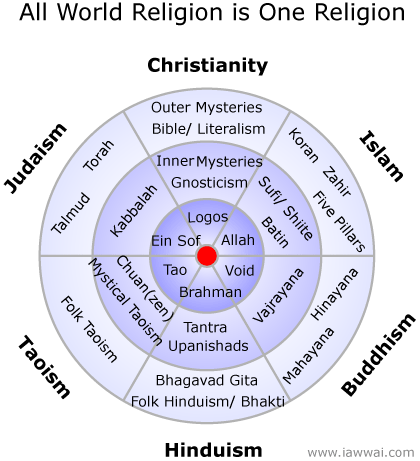
Unity and commonality of
ภาพประกอบไม่เกี่ยวกับเนื้อเรื่องจาก iawwai.com
ก่อนที่ Levin จะเข้าเรื่องการทำให้ตลาดเป็น global Levin ได้อธิบายให้เห็นถึงความแตกต่างระหว่างบริษัทที่เรียกตัวเองว่า Multinational Corporation และ บริษัทที่เรียกตัวเองว่า Global Corporation บริษัทที่เป็น Multinational Corporation นั้นมีสาขาอยู่ในหลายๆประเทศและทำการตัดแปลงลักษณะสินค้ารวมทั้งการทำงานให้สอดคล้องกับประเทศที่บริษัทนั้นตั้งอยู่ วิธีนี้เป็นวิธีทำธุรกิจที่แพงมาก ในทางตรงกันข้าม Global Corporation ทำธุรกิจที่สิ้นเปลืองค่าใช้จ่ายน้อยกว่ามาก โดยการขายสินค้าอย่างเดียวกันด้วยวิธีการแบบเดียวกันทุกหนทุกแห่งในโลกนี้ บริษัทประเภทหลังมิได้มองว่าโลกนี้ประกอบด้วยตลาดที่มีลักษณะเฉพาะ Customized market มากมาย แต่มองว่ามันประกอบด้วยตลาดมาตรฐาน Standard Market เพียงไม่กี่แห่งเท่านั้น
บรรดาบรรษัทระดับโลกที่่มีประสิทธิภาพสูงเหล่านี้ จะแข่งขันกันในเรื่องคุณค่าของผลิตภัณฑ์เป็นหลัก โดยมีเรื่องของราคา คุณภาพ ความน่าเชื่อถือ และ ระบบผลิตที่เป็นมาตรฐานเดียวกัน (Standard Market ) เป็นข้อพิจารณาที่สำคัญยิ่งในการแข่งขันด้วย
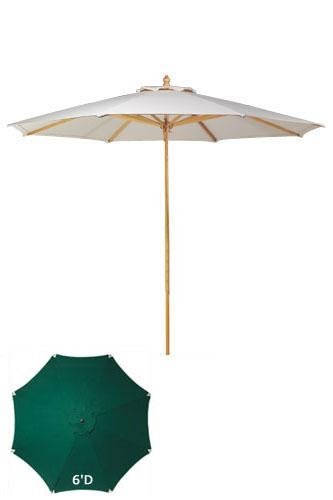
Standard Market Umbrella 6'd
ภาพประกอบไม่เกี่ยวกับเนื้อเรื่องจาก builderssquare.com
Levin ยกตัวอย่างกรณีบริษัทญี่ปุ่นที่สามารถผลิตสินค้ามาตรฐานเดียวกันออกมาด้วยต้นทุนต่ำแต่คุณภาพสูง ปัจจัยสองประการนี้เองที่ดึงดูดลูกค้าซึ่งครั้งหนึ่งเคยนิยมชมชอบสินค้าในท้องถิ่นให้หันมาสนใจ อันที่จริงควรชื่นชอบต่อผลิตภัณฑ์ของผู้คนนั้นก็มีวันเสื่อมคลายและจางหายไปในที่สุด แต่ความชื่นชอบบางอย่างก็สามารถโลดแล่นออกสู่โลกกว้างได้ ยกตัวอย่างเช่น อาหารจีน ดนตรีลูกทุ่งตะวันตก พิซซ่า และ เพลงแจ๊ส ซึ่งพบได้ทุกหนทุกแห่ง











